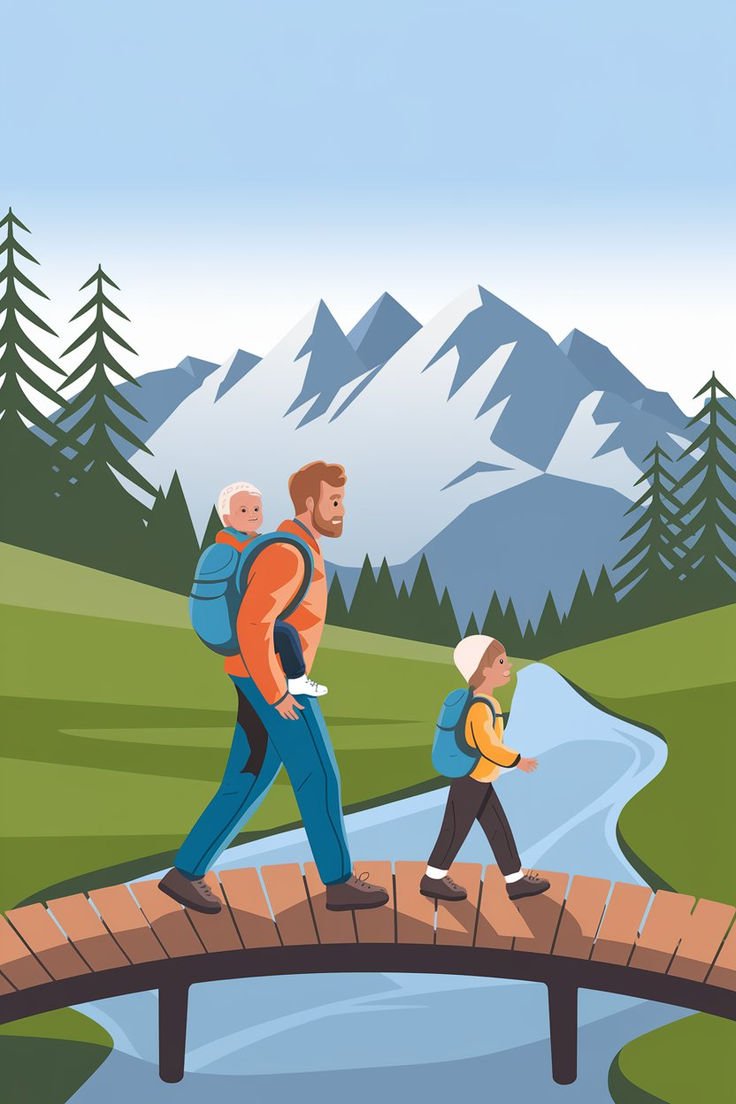
10 Essential Hiking Tips for Beginners: What to Know Before You Hit the Trail
Hiking is an excellent way to connect with nature, improve your physical health, and enjoy some peace of mind. However, if you’re new to trekking through the outdoors, it can feel a little daunting. With the right preparation and knowledge, you can ensure your first hiking trip is safe, enjoyable, and rewarding. Below are 10 essential tips for beginners that will help you hit the trail confidently.
1. Research Your Trail Thoroughly
Before heading out, spend time researching your chosen trail. Review the trail’s length, elevation gain, terrain type, and difficulty rating. Websites such as AllTrails provide reliable insights, including user reviews and photos. Choose a trail that matches your fitness level and experience to avoid feeling overwhelmed.
Additionally, check local regulations, parking details, and whether permits are required. Being informed eliminates surprises and helps you focus on enjoying your hike.
2. Dress Appropriately for Weather and Terrain
Wearing the right clothing is key to staying comfortable and safe. Opt for moisture-wicking fabrics to keep sweat at bay, and dress in layers so you can adjust to changing temperatures. A lightweight, water-resistant jacket is essential in case of unexpected rain.
For footwear, invest in a pair of well-fitted hiking boots or trail shoes with good grip to prevent blisters and slips. Avoid wearing cotton socks; instead, choose wool or synthetic materials to protect your feet.
3. Pack the Ten Essentials
Always carry the “Ten Essentials” to ensure you’re ready for any situation. These items include:
- Navigation tools (map, compass, or GPS)
- Headlamp with extra batteries
- Sun protection (sunscreen, sunglasses, hat)
- First-aid kit
- Knife or multi-tool
- Firestarter (matches, lighter, or fireproof kit)
- Emergency shelter (space blanket or bivy sack)
- Extra food
- Extra water
- Extra clothing layers
Even on shorter hikes, having these essentials can make a big difference in case of emergencies.
4. Stay Hydrated and Fuel Your Body
Dehydration can sneak up quickly, especially during warm weather or on challenging trails. Carry at least half a liter of water per hour of hiking. Consider using a hydration bladder for convenience.
Bring nutrient-dense snacks like trail mix, energy bars, or dried fruit to keep your energy up. Pack slightly more than you think you’ll need, just in case delays occur.
5. Start Early and Know Your Turnaround Time
Begin your hike early in the day to enjoy cooler temperatures and give yourself ample daylight to complete the trek. Plan a specific turnaround time—this is the latest time you should start heading back, regardless of whether you’ve reached your final destination. Following this rule helps you avoid hiking in the dark or getting caught unprepared.
6. Learn Basic Navigation Skills
Even if you’re using a GPS device or smartphone app, it’s crucial to know how to read a map and use a compass. These tools don’t rely on batteries and remain your most reliable navigation method when technology fails. Consider taking a basic orienteering class or watching tutorials to build confidence in your navigation abilities.
7. Practice the Leave No Trace Principles
Every hiker has a responsibility to protect nature. Follow the “Leave No Trace” principles by:
- Packing out all trash, including biodegradable items
- Staying on marked trails to prevent erosion
- Avoiding disturbing plants and wildlife
- Disposing of human waste properly (portable trowels or bags can help)
- Minimizing campfire impact by using stoves instead
Respecting these guidelines preserves outdoor spaces for future hikers.
8. Check Weather and Trail Conditions
Weather can change rapidly in outdoor environments. Always check the forecast the day before and the morning of your hike. Cancel or reschedule your trip if thunderstorms, high winds, or extreme conditions are expected.
Trail conditions are equally important. Muddy, icy, or snow-covered paths may require additional gear such as trekking poles or microspikes to ensure safety.
9. Go at Your Own Pace
Pushing yourself too hard can lead to exhaustion or injury. Hike at a steady pace, and take breaks when needed to hydrate, snack, or simply enjoy the scenery. Monitoring how you’re feeling during the hike can help prevent overexertion, particularly if you’re tackling steeper inclines.
10. Tell Someone Your Plans
Always inform someone where you’re going and when you plan to return. Share details like your trail route, start time, and expected finish. This step ensures help can arrive quickly if something goes wrong and you fail to return as planned. Additionally, consider carrying a personal locator beacon (PLB) or satellite messenger for emergency communication in areas with no cell service.
Final Thoughts
Hiking as a beginner doesn’t need to be intimidating. By preparing thoroughly, dressing appropriately, and equipping yourself with essential knowledge and tools, you can start your hiking adventures with confidence. Remember to respect both your own limits and the natural environment, and you’ll set the stage for many great outdoor experiences to come. Happy trails!
